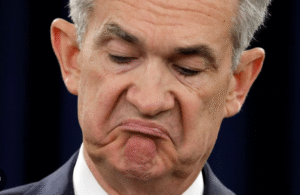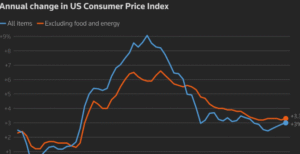# $CL_F #CrudeOil #OilPrices #WTI #RBOB #EnergyMarket #Commodities #GlobalEconomy #SupplyChain #MarketTrends #CrudeNews
Why Are Crude Oil Prices Dropping? Understand the Impact of the Current Glut
Crude oil prices continue to slide as market participants grapple with ongoing concerns about a global oil surplus. In recent trading, December WTI crude oil (CLZ25) closed down $1.16, marking a 1.89% decline. Similarly, December RBOB gasoline (RBZ25) fell by $0.0026, reflecting a 0.14% decrease. This crude news signals a broader anxiety within the energy sector about excess supply and its implications for market stability.
As reports indicate, crude oil stored on tankers remains stationary, raising alarms about the current state of excess inventory. Vortexa’s data further emphasizes the growing trend of crude oil being held in floating storage, which suggests that demand is not keeping pace with supply. Consequently, traders and analysts are increasingly cautious, leading to the downward pressure on prices.
Understanding Market Dynamics: Supply vs. Demand
The fundamental principle of supply and demand plays a crucial role in the current situation. On one hand, OPEC+ production cuts aimed at stabilizing prices have partially succeeded. However, the group’s efforts are undermined by rising output from other countries, particularly the U.S. Increased production levels from shale oil producers contribute to the surplus, despite OPEC+’s attempts to balance the market.
Additionally, economic uncertainties, particularly regarding global growth, exacerbate the situation. Slowing economic activity raises concerns about future energy consumption. As businesses scale back on operations and consumers rein in spending, a shift in demand dynamics occurs. The result is a market flooded with excess crude oil, leading to significant price declines.
Geopolitical Factors and Economic Indicators
Geopolitical tensions and economic indicators also affect crude oil prices. Issues such as trade disputes and currency fluctuations influence investor sentiment. Moreover, central banks’ monetary policies can either stimulate or dampen demand. For instance, interest rate hikes can lead to reduced borrowing and spending, further impacting energy consumption.
Market participants are advised to monitor key economic indicators, including GDP growth rates and employment data, as they provide essential insights into energy demand trends. Fluctuations in these indicators can significantly affect oil prices, creating opportunities for informed trading strategies.
Looking Ahead: What’s Next for Crude Oil?
As the market adjusts to the current conditions, traders should remain vigilant. The potential for further price declines exists if oversupply persists. However, any signs of increased demand or geopolitical tensions could quickly shift the narrative.
Investors interested in diversifying their portfolios may also look toward other sectors. For those considering stocks, explore our stock insights for potential opportunities.
In conclusion, the current drop in crude oil prices reflects a complex interplay of supply and demand dynamics, geopolitical factors, and economic indicators. As the market evolves, staying informed will be crucial for making strategic investment decisions.











Comments are closed.